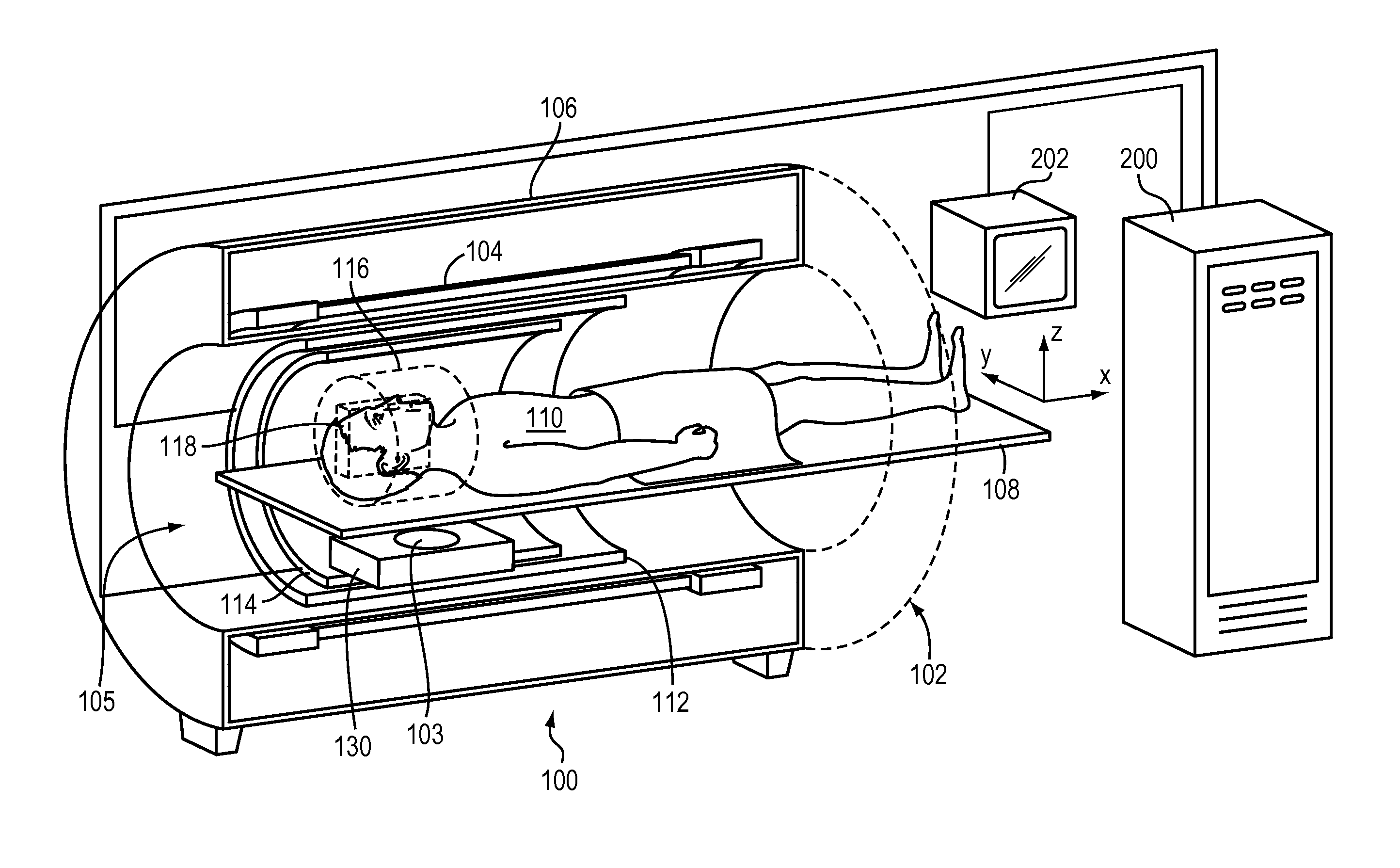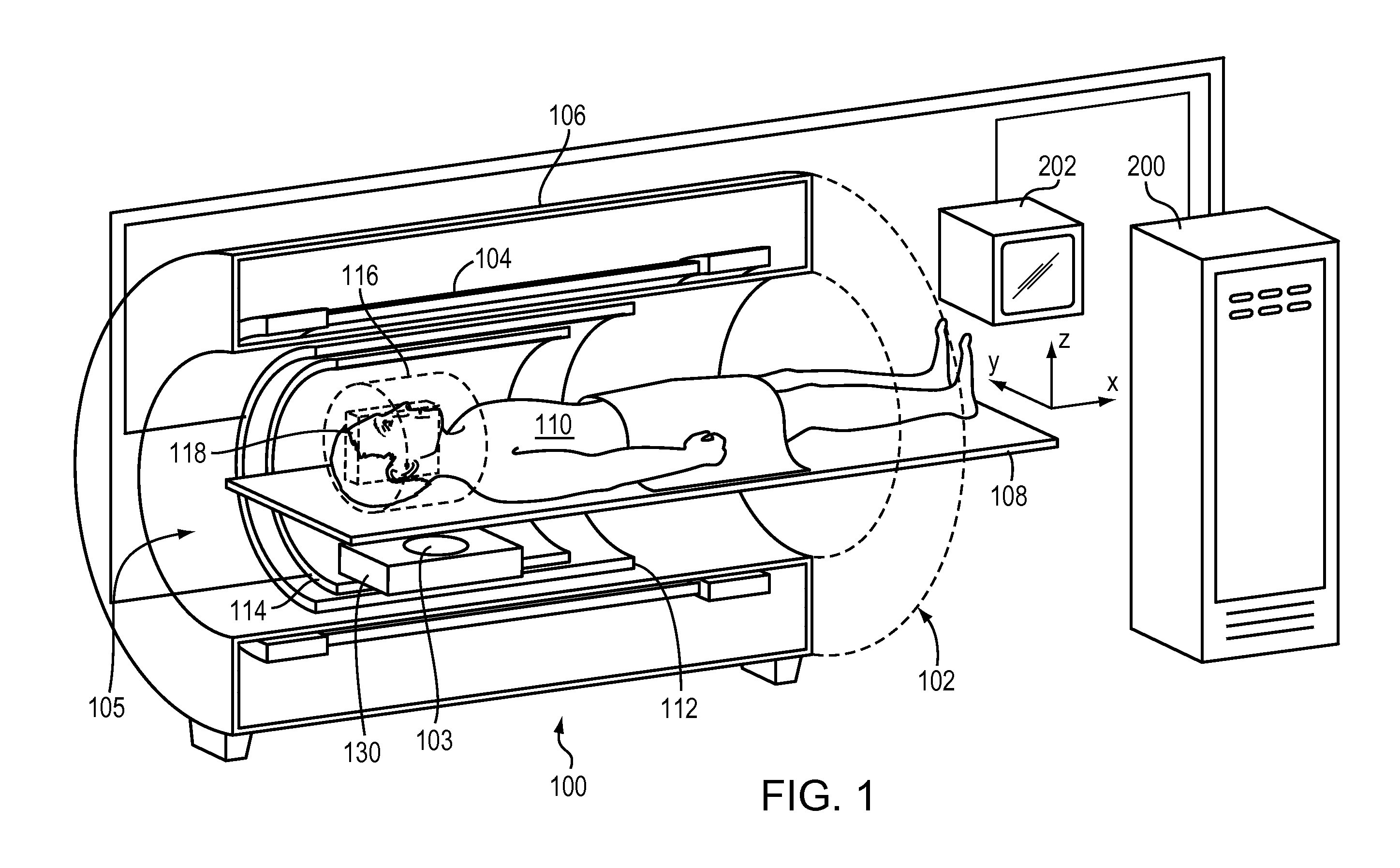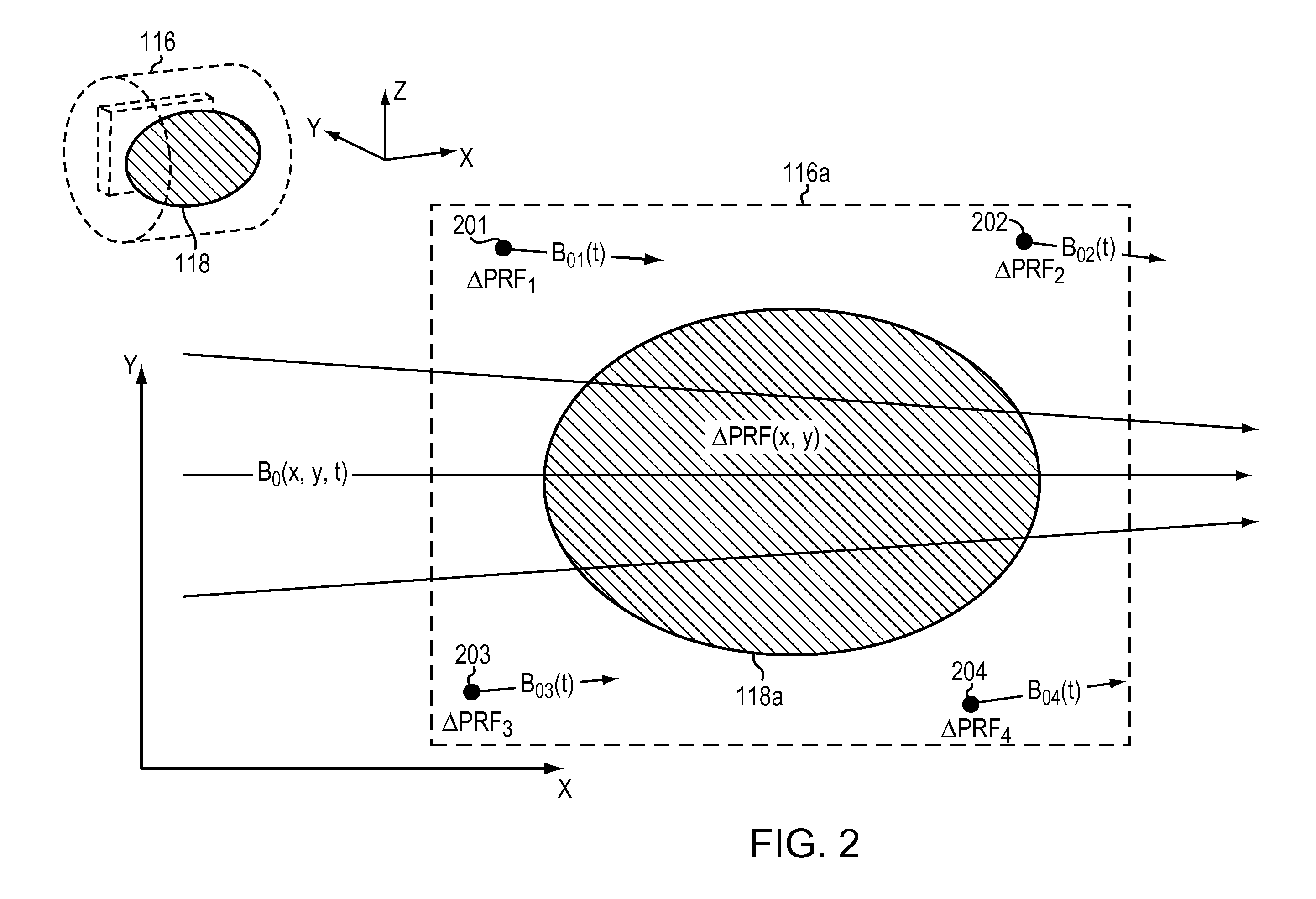Techniques for temperature measurement and corrections in long-term magnetic resonance thermometry
a technology of long-term magnetic resonance and temperature measurement, applied in the field of magnetic resonance imaging, can solve the problems of spurious phase shifts, invalid phase-sensitive temperature measurement, and inability to make temperature measurements using the above-mentioned phase-sensitive approach, and achieve the effect of facilitating correction of temperature measurements
- Summary
- Abstract
- Description
- Claims
- Application Information
AI Technical Summary
Benefits of technology
Problems solved by technology
Method used
Image
Examples
Embodiment Construction
[0026]Embodiments of the present invention improve the utility and robustness of MR thermometry, as described below, to measure absolute temperatures and compensate for phase shifts that arise from factors other than temperature changes.
[0027]FIG. 1 shows an exemplary MRI system in or for which the techniques for temperature measurement and corrections in accordance with the present invention may be implemented. The illustrated MRI system 100 comprises an MRI machine 102. If an MR-guided procedure is being performed, a medical device 103 may be disposed within the bore of the MRI machine 102. Since the components and operation of the MRI machine are well-known in the art, only some basic components helpful in the understanding of the system 100 and its operation will be described herein.
[0028]The MRI machine 102 typically comprises a cylindrical electromagnet 104, which generates a static magnetic field within a bore 105 of the electromagnet 104. The electromagnet 104 generates a su...
PUM
 Login to View More
Login to View More Abstract
Description
Claims
Application Information
 Login to View More
Login to View More - R&D
- Intellectual Property
- Life Sciences
- Materials
- Tech Scout
- Unparalleled Data Quality
- Higher Quality Content
- 60% Fewer Hallucinations
Browse by: Latest US Patents, China's latest patents, Technical Efficacy Thesaurus, Application Domain, Technology Topic, Popular Technical Reports.
© 2025 PatSnap. All rights reserved.Legal|Privacy policy|Modern Slavery Act Transparency Statement|Sitemap|About US| Contact US: help@patsnap.com



